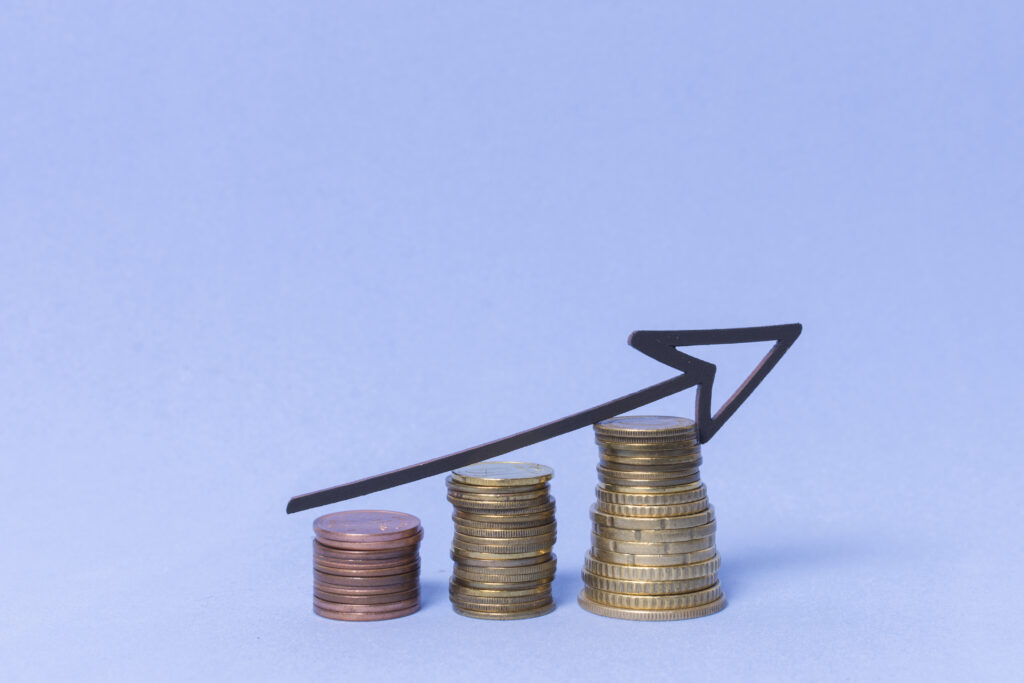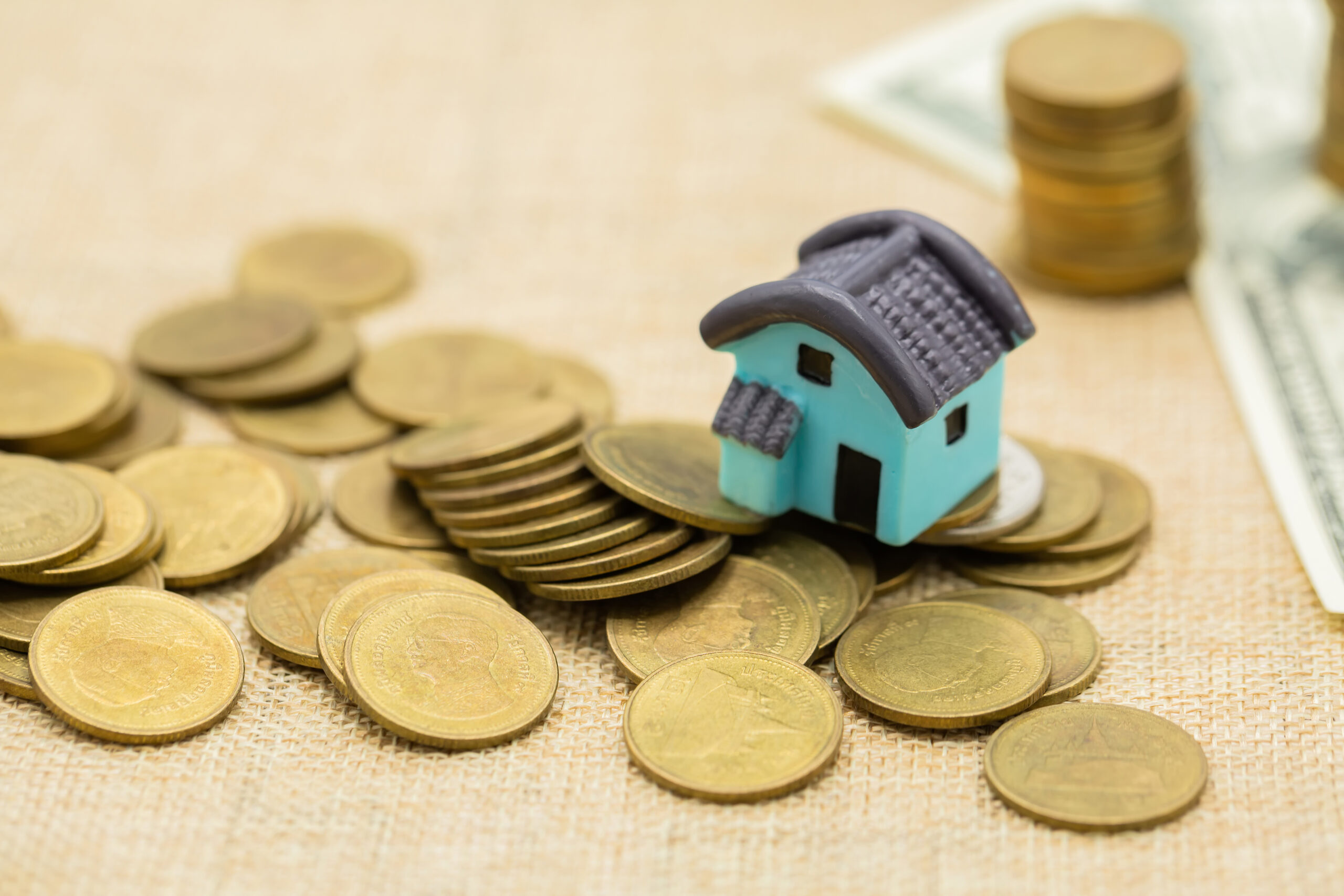Inflation is a force that can erode the purchasing power of your money, making everyday expenses harder to manage. From grocery bills to utility costs, inflation seems to be a constant in modern economic life. For homeowners, the rising cost of living can create additional strain on finances, especially if the interest rates on existing debts start to climb.
However, there’s a strategy that can help you not only protect against inflation but also leverage your home to your advantage. A Home Equity Line of Credit (HELOC) may be the solution you need to safeguard your finances in these uncertain times.
In this article, we’ll explore how using a HELOC can help protect you against inflation, how it works, and how to implement this strategy to make the most of your home equity. Plus, we’ll guide you through the benefits, risks, and alternatives to ensure you make an informed decision.
If you’re ready to take control of your mortgage and build a better financial future, click here to discover how you can eliminate debt and mortgage interest in 5 years or less, all without changing your lifestyle.
What is a HELOC? (Home Equity Line of Credit)
Before diving into the specifics of using a HELOC for inflation protection, it’s important to understand exactly what it is.
A Home Equity Line of Credit (HELOC) is a revolving line of credit secured by the equity in your home. Much like a credit card, a HELOC allows homeowners to borrow up to a certain amount based on the value of their property, using it as collateral. Unlike a traditional loan where you receive a lump sum, a HELOC offers flexibility, allowing you to borrow, repay, and borrow again, typically with a low-interest rate compared to other types of loans.
HELOCs are often used for home improvements, debt consolidation, or large purchases, but they can also be an excellent tool for financial protection during inflationary times.
By accessing the equity in your home, you can help manage the increasing costs of living or consolidate higher-interest debts into a more manageable monthly payment. Plus, in times of inflation, using a HELOC may allow you to lock in a relatively lower interest rate before rates rise further.
If you’re considering using a HELOC as part of your strategy to combat inflation, you might want to take action today and learn how you can pay off your mortgage in as little as 5 years with a personalized plan.
Understanding the Link Between Inflation and Interest Rates

Inflation and interest rates are deeply intertwined. When inflation increases, the Federal Reserve typically responds by raising interest rates. This, in turn, raises borrowing costs, making loans, mortgages, and credit cards more expensive. For homeowners, this can be a double-edged sword: while the cost of living increases, so does the cost of servicing debt.
This is where a HELOC can be an invaluable tool.
By securing a HELOC before rates spike, you can lock in a lower rate that could help you manage expenses as inflation impacts everything from food to utilities. Even though HELOCs typically have variable rates, they tend to be more favorable compared to credit cards and personal loans, especially if you have a significant amount of equity in your home.
However, the key to using a HELOC successfully is timing. The sooner you access your home’s equity before rates rise, the better positioned you’ll be to withstand inflation’s financial pressures.
How a HELOC Can Be Used to Protect Against Inflation
A HELOC offers a flexible way to access cash during times of financial strain. But how exactly does it protect you against inflation?
- Leverage Your Home Equity
Homeownership is a significant asset, and your home equity can act as a buffer against inflation. If you’ve built up substantial equity in your home, a HELOC can provide you with a low-cost way to access funds. Whether you need to pay off high-interest debts, make repairs, or consolidate loans, a HELOC can give you the flexibility to manage your finances without increasing your overall financial burden. - Flexible Borrowing
Unlike traditional loans, which offer a lump sum payment, a HELOC provides ongoing access to funds. You can borrow as much or as little as you need, when you need it. This makes it ideal for addressing inflationary costs as they arise. For example, you might need extra cash for an unexpected medical bill, car repair, or other rising expenses. A HELOC allows you to access those funds without locking yourself into a rigid loan structure. - Low Initial Interest Rates
In times of rising inflation, locking in a low-interest rate for borrowing becomes even more critical. HELOCs typically offer lower rates than credit cards, personal loans, and other types of unsecured debt. By accessing a HELOC before interest rates rise, you can secure a rate that helps protect your financial stability, even as inflation drives costs up. - Debt Consolidation
If you have existing high-interest debt, using a HELOC to consolidate those loans can save you money. With inflation driving up borrowing costs, consolidating high-interest loans into a HELOC with a lower rate can be a smart move. This will reduce your monthly payments and protect you from rising interest rates on your other loans.
Benefits of Using a HELOC for Inflation Protection
Let’s break down some of the most important benefits of using a HELOC as part of your inflation protection strategy:
- Access to Funds When You Need Them
A HELOC provides a safety net for unforeseen expenses, such as medical bills, home repairs, or even temporary loss of income. Having access to funds in these situations can alleviate stress, especially when inflation is stretching your budget thin. - Lock in Favorable Interest Rates
As we’ve discussed, inflation drives up interest rates. By securing a HELOC when rates are still low, you can lock in a more affordable rate. This helps protect your borrowing costs and ensures that you don’t get caught paying more as inflation pushes rates higher. - Pay Down High-Interest Debt
Rising inflation often leads to higher interest rates on credit cards and loans. By using your HELOC to pay off this high-interest debt, you can reduce the financial pressure caused by increased interest payments. Plus, HELOCs usually come with lower rates, making this strategy even more effective. - Flexibility
Unlike a home equity loan, which gives you a lump sum, a HELOC is a revolving line of credit. This gives you the ability to borrow as much or as little as you need, only paying interest on the amount you borrow. This flexibility makes a HELOC an excellent tool for managing your finances during inflationary times.
Considerations Before Using a HELOC for Inflation Protection
While a HELOC can be a powerful tool for inflation protection, there are some important considerations to keep in mind:
- Home Equity
To qualify for a HELOC, you’ll need to have enough equity in your home. If you haven’t built up substantial equity, you may not be able to tap into a HELOC or access the full amount you need. It’s essential to evaluate your current equity before considering this option. - Variable Interest Rates
Many HELOCs come with variable interest rates, which means your rate could increase over time, especially if inflation continues to rise. Be prepared for potential rate hikes, and make sure you can manage the fluctuations in your payment schedule. - Repayment Risk
As with any debt, it’s essential to have a plan for repaying your HELOC. Failing to repay your line of credit could put your home at risk. It’s important to ensure that you can manage the payments and have a strategy for paying off the balance.
If you’re ready to take control of your finances and eliminate debt, click here to learn how you can create a custom plan to pay off your mortgage in just 5 years!
How to Apply for a HELOC in Today’s Economic Climate
If you’re interested in using a HELOC to protect against inflation, here’s a step-by-step guide on how to apply:
- Evaluate Your Home Equity
The first step is to determine how much equity you have in your home. Most lenders will allow you to borrow up to 85% of your home’s value, minus what you still owe on your mortgage. - Check Your Credit Score
Your credit score plays a significant role in determining whether you’ll qualify for a HELOC and the interest rate you’ll receive. Make sure your credit score is in good shape before applying. - Compare Lenders
Not all lenders offer the same terms, so it’s essential to shop around. Compare interest rates, fees, and repayment terms to find the best option for you. - Gather Documentation
To apply for a HELOC, you’ll need to provide documentation such as proof of income, proof of residence, and your mortgage information. Having this ready will speed up the process. - Apply and Wait for Approval
After submitting your application, the lender will review your financials and property value before approving your request. If approved, you’ll be given access to your line of credit.
Alternatives to a HELOC for Inflation Protection
If a HELOC doesn’t seem like the right fit for your situation, there are other strategies to consider:
- Refinance Your Mortgage
Refinancing your mortgage can be a way to lower your monthly payments and lock in a more favorable interest rate before rates rise. - Invest in Inflation-Hedging Assets
Consider diversifying your portfolio with assets that typically perform well during inflation, such as real estate, gold, or commodities. - Build an Emergency Fund
Having cash reserves can help you weather rising costs without relying on credit. An emergency fund can give you peace of mind during uncertain economic times.
Common Myths About HELOCs and Inflation Protection
There are several myths about using HELOCs that can deter people from considering this option:
- Myth: HELOCs Are Risky
While it’s true that HELOCs use your home as collateral, they can be a safe option when used responsibly and with a clear repayment plan. - Myth: HELOCs Have High Fees
Many HELOCs have low or no fees, and the interest rates are generally lower than credit card rates.
When Is the Right Time to Use a HELOC for Inflation Protection?
The best time to use a HELOC for inflation protection is when you anticipate rising costs or when you notice inflationary pressures impacting your budget. By locking in a low rate now, you can avoid the higher rates that may come with future inflation.
Conclusion: Taking Control of Your Financial Future
Inflation is a powerful economic force, but it doesn’t have to derail your financial plans. By using a HELOC strategically, you can protect your finances, lower your borrowing costs, and secure a better future.
If you’re ready to learn how to eliminate your mortgage debt and build long-term cash flow, click here to discover how you can pay off your home in 5 years or less, without changing your lifestyle!
Affiliate Disclaimer: BestMortgages.co may include affiliate links, which allow us to earn a small commission when you make a purchase through them. This helps support our site at no extra cost to you. Thank you for your support!




0 Comments